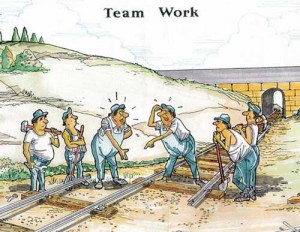The term “high-performing teams” is almost worn out in the world of business and team-building in particular. Everybody wants high-performing teams. But what does it mean? I think it means “happy teams”, because people who enjoy their jobs and feel good about the way they are treated at work produce more and give more of themselves to the people around them.
 So how do you get happy teams and make sure their strengths are utilized? (Both as individuals and as a group) There are, as I am sure you know, a few hundred theories on that and consulting companies earn lots of money finding solutions to that question. Personally, I think the key is a simple word; the word is ”inclusion”. Rather than giving you a well-documented recipe on how to build happy teams, I would like to share some personal experiences and invite you to reflect on what I am sharing.
So how do you get happy teams and make sure their strengths are utilized? (Both as individuals and as a group) There are, as I am sure you know, a few hundred theories on that and consulting companies earn lots of money finding solutions to that question. Personally, I think the key is a simple word; the word is ”inclusion”. Rather than giving you a well-documented recipe on how to build happy teams, I would like to share some personal experiences and invite you to reflect on what I am sharing.
I have almost 20 years of work experience, and I have been in two high-performing/happy teams. What did these two teams have in common?
- Tangibles: A clear, outspoken and repeated vision and mission. Clear job description. Regular team meetings. Structured performance management.
- Non-tangibles: A strong wish among the team-members to succeed. Humour. Acceptance of emotions. Respect. Support. Focus on strengths and using these strengths. Acceptance of differences. Feeling proud of colleagues and being part of the team.
In one of the teams the connectivity was strengthened by using communication tools like chatting on Instant Messenger, structured telephone team meetings, spontaneous individual telephone calls and regular email contact. Even though a virtual team, it didn’t feel like it. In the other team, there was a culture for sharing mistakes, as it was considered to heighten the learning for everyone. In this team humour was an important factor of the team spirit which led to increased energy and productivity (moneywise it was the highest performing team in the company).
As you can see from the above, the non-tangible list is longer than the tangible one. What does it tell you? What am I not mentioning in my tangible/non-tangible lists?
Feel free to send me your thoughts!
